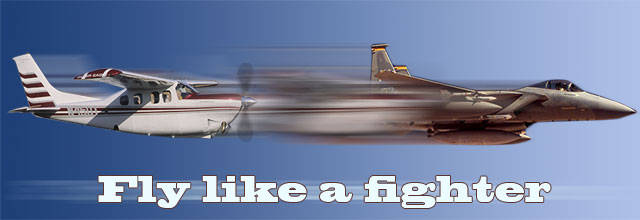
I’ve seen zero airspeed in flight a few times, and each time always gets my attention. On my first flight in F-15 transition training, one of the scheduled maneuvers my instructor showed me was a stability demonstration. He pulled the jet up into a pure vertical climb, and we watched the airspeed bleed off from 400 knots--all the way to zero. Suspended in midair just for a moment, I held onto the canopy handles as we slid down toward Earth again tail first and got a good whiff of our exhaust as we fell through it. After a short fall, the jet flipped over nose down and went through a few gyrations, and once we had flying airspeed my instructor recovered from the dive. The purpose of the exercise was to show us that if you didn’t demand anything from the jet (push, pull, or roll), then it would eventually recover to a flyable condition.
Five years later, while sitting air defense alert in Germany, the horn went off for us to scramble for a training mission. Between the bone-vibrating klaxon and sliding down the fire poles to get to our F-15s, my adrenaline always surged into hyperdrive. After running through our preflight drill, my wingman and I were taxiing in short order, and I had my afterburners lit for takeoff about three minutes after the horn first sounded. On the takeoff roll, I checked my engine instruments, double-checked that my ejection seat was armed, and then waited for rotation speed.

The first time I looked at my airspeed was when I was near 120 knots--based on my ground roll and feel from the stick. My airspeed read zero. The weather was clear, and I was definitely in “go” mode, so I continued the takeoff. Instead of doing our usually aggressive pull and climb, I did a more conservative climb and then rolled out on our assigned heading. My wingman rejoined on me and we switched to our tactical control frequency where I immediately told the controller to standby. I set a known power setting to hold 300 knots in level cruise. While doing some troubleshooting I could not get the airspeed to register, but my angle of attack gauge worked as well as my tiny standby airspeed indicator located low on the center pedestal, behind the stick and near my shin.
My plan was to give my wingman the lead, dump fuel, and then fly a formation approach on his wing. When I told him that my airspeed read zero, his response totally caught me off guard. His airspeed was also zero! Ultimately, we each got our own chase ship to fly us down final. However, since we had dumped fuel and were lightweight, and our lead escorts had just taken off and were still heavy, their approach speed was a bit fast for us. I knew this from my angle of attack, so about a mile on final, I cleared my escort off and was able to land uneventfully on my own. Maintenance never did figure out what caused each of us to lose our airspeed indicators.
Since most general aviation airplanes don’t have an angle of attack gauge, and formation flying isn’t a well-practiced skill, your best bet in the case of airspeed indicator failure is to know good power settings to hold specific airspeeds in cruise and on final for landing. In addition to being helpful in an emergency, it will help make your everyday flying more precise—especially with a working airspeed indicator.
Larry Brown of Colorado Springs, Colo., is a retired Air Force F-15 pilot who is using the lessons he learned as a fighter pilot as a GA pilot in his Cessna P210. Brown, who has 2,600 hours total time during his 32 years of flying, also was an instructor pilot and flight examiner in the Air Force T-38 and instructor pilot in the T-52, the military’s version of GA’s Diamond DA40. See previous installments of “Fly like a fighter.”



